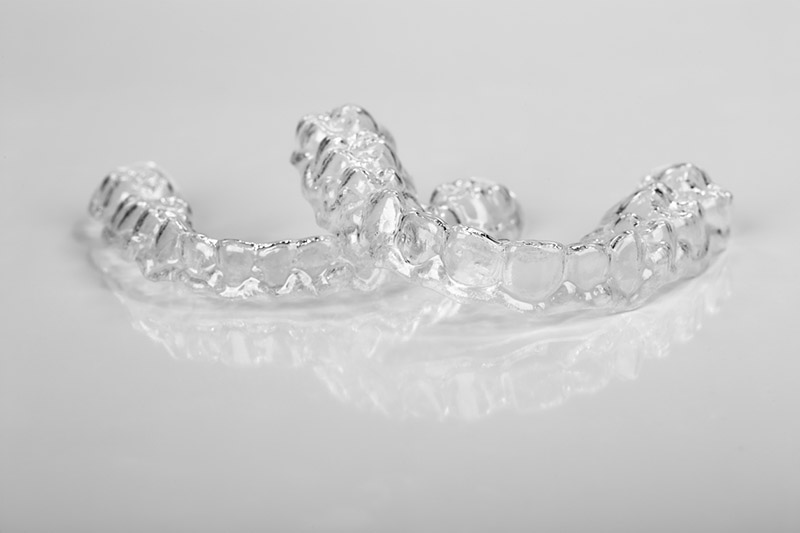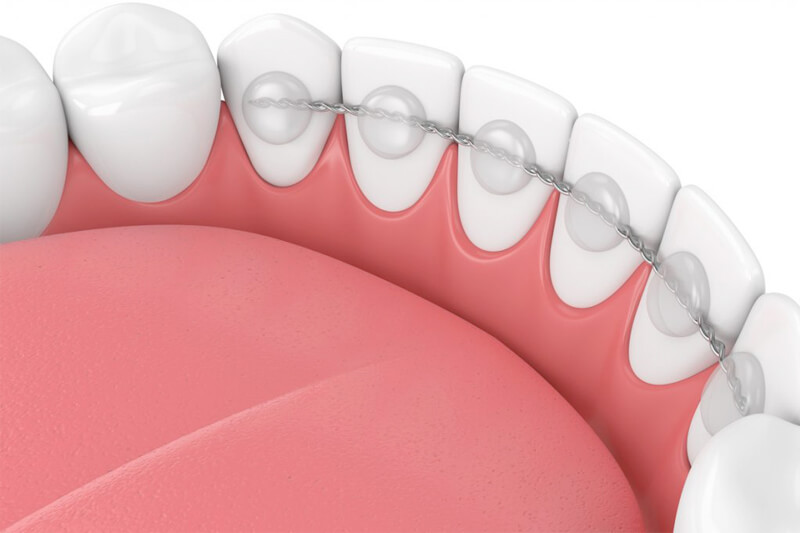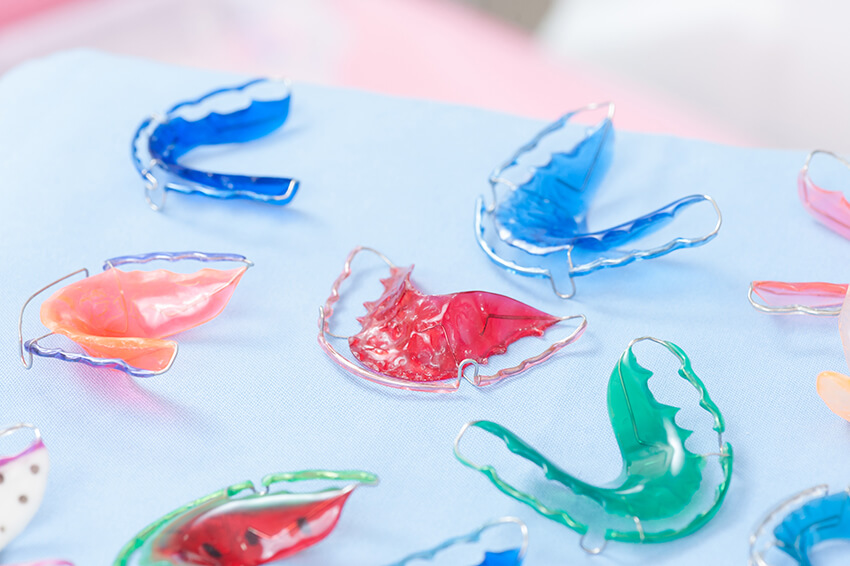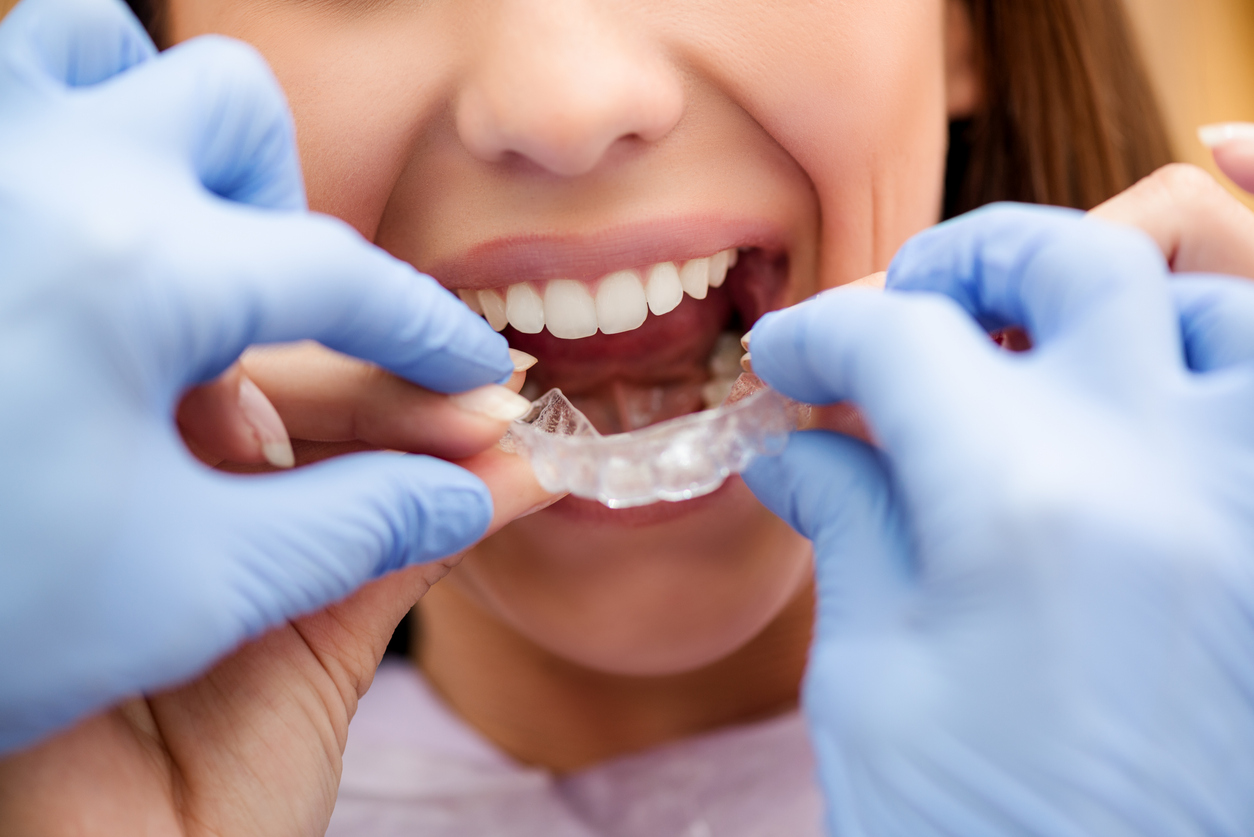So you’ve been told your orthodontic treatment is almost done and now it’s time to talk about retainers! How exciting! There is much to discuss about the topic of retainers so we have created this article as a resource to address some of the most commonly asked questions.
Why are retainers needed?
Unfortunately, orthodontic treatment is not a cure. Although bites can be fixed and teeth can be aligned, all teeth, no matter how they were moved – whether it was using braces or Invisalign, like to return to their original position with time. Some people’s teeth have a higher tendency to shift while others’ do not. Because we cannot predict whose teeth will move and whose may not, we provide retainers to everyone. With lifelong wear of retainers, your teeth should stay approximately with the same alignment forever.
How often do I have to wear retainers?
It is best practice for removable retainers to be worn every night for approximately 8-12 hours. However, as mentioned – some people’s teeth tend to shift more than others’ so the answer to this question is person-specific. We encourage for the first year or two to follow this protocol. After, if you find nightly retainer wear to be overly burdensome, you can skip a night and see if the retainer is tight the next night. If it is, it means your teeth like to move and you should be wearing your retainers nightly. If not, you may have some leeway and can drop down retainer wear to a couple nights a week. You should never be without a retainer at any point.
What are the retainer options?


At Walt Orthodontics, we utilize a number of retainers but the vast majority are clear and removable (called Essix retainers) and/or lingual bonded (called permanent retainers). Check out our website for more information.
What does Dr. Walt recommend?
The answer to this question varies person to person. As a standard, we provide removable clear (Essix) retainers to everyone. The reason for this is that they are proven to be the most effective retainer at keeping all the teeth in the dental arch in position long term with nightly wear. That being said, for people looking for more security in maintaining the alignment of their front teeth, we can place the lingual bonded (permanent) retainers. Note – the removable clear retainer would be worn on top of the permanent retainer wire so two types of retainers would be present on the dental arch.
Is a permanent retainer necessary?
In most situations, not really. If the removable retainer is worn consistently 8-12 hours nightly, then the essix retainer should keep your teeth approximately in the same position. However, we recognize that this may be difficult for some people so the permanent retainer gives a little more security. Nevertheless, there are certain types of tooth movements where a permanent retainer may be recommended – for example, for teeth that started out very rotated, or for teeth that started out with big spaces in between them. Moreover, for people who have tongue thrust habits, having a wire in addition to a removable retainer helps reinforce the dental arch and minimizes relapse due to the tongue pushing on the teeth.
What are the negatives of a permanent retainer?
The biggest negative of a permanent retainer is it requires more hygiene. Because the teeth are splinted together, they cannot be flossed normally. Instead, floss threaders are required and each tooth needs to be flossed individually. Secondly, although called a “permanent retainer” it does not last forever. It is quite common that the wire can become unglued from the tooth or the metal wire can physically break. Repair costs can add up long term and become quite costly. Lastly, it goes without saying that upper permanent retainers tend to break quite often compared to lower permanent retainers. This is because these wires often contact the lower teeth when chewing and with prolonged forces, tend to break or become unglued.
Why can an upper permanent wire not be placed in my situation?
Even though you may want an upper permanent wire for yourself or for your child, it may not be possible. The reason for this is that the position of the lower teeth need to be considered. Everyone’s bite is different. For many people, the lower teeth touch the upper teeth in the place where a wire would theoretically be placed. When this happens, the back teeth do not touch properly which can lead to an uncomfortable bite. Further, after a brief period of time, the wire will break because it is subjected to repeated biting forces. So when Dr. Walt says a wire is not recommended – it’s not that he doesn’t want to do it, it’s that the bite does not allow for it and placing it will result in future breakage and likely orthodontic relapse.
Dr. Walt said I am a candidate for a permanent retainer if I want one but it’s not required. Should I still get one?
We leave the decision up to you. If you are diligent in wearing your retainer nightly you should be OK. That being said, it is normal for teeth to settle. This means that the tooth may shift 0.5 – 1 mm even with nightly retainer wear. For some people, this keeps them up at night and annoys them. For this type of personality, we usually say a wire will help minimize any settling. For those that are not bothered by tiny bits of settling and enjoy the freedom of uncomplicated oral hygiene, we usually say go with just removable retainers.
Can I just have a permanent retainer and not use my removable retainer?
This is a big misconception for two main reasons. Firstly, if your wire becomes unglued from a front tooth and you are unaware, the tooth may shift. Wearing a removable retainer on top of the permanent retainer helps prevent this from happening. Secondly, during orthodontic treatment we are likely moving your back teeth – most commonly expanding them. The wire is just glued to the front 4 or 6 teeth – so all the back movements will relapse without a removable retainer.
Will I feel the permanent retainer? Will it hurt?
Yes, you will feel the permanent retainer initially but it won’t hurt. You will feel little pads of glue on each tooth. Initially you may find this annoying. However, most people get used to the permanent retainer after a few days and don’t think about it with time.
Can I add a permanent retainer later? Also, can I remove the permanent retainer later if I wish?
If you choose just removable retainers at the completion of your treatment you can likely add a permanent retainer later if you are a candidate. However, there will be extra costs and you will need a new removable retainer to fit over the wire. Similarly, if you start with a permanent retainer and wish to remove it later, you can but again, there are additional costs and you will require a new removable retainer.
Can I have one of the old school (Hawley) type of retainer instead of the removable clear retainer?

Hawley retainers consist of an acrylic portion covering the palate and a metal wire running in front of the anterior teeth. In situations where the back bite needs to settle after completion of orthodontic treatment, we may recommend one. While they are great and durable retainers, they do not cover the entire teeth and therefore, you may see some minor tooth movements while wearing a Hawley retainer.
How long will the retainers last?
Removable clear retainers usually last 2-3 years. Most of the time they need to be replaced because they are not cleaned enough. They can be cleaned with toothpaste, mouthwash or soaked in Polident retainer solution. We usually recommend opting into our Digital Retainer Program as it is the most cost effective solution in the long term. Permanent retainers can last upwards of 10 years but it is not uncommon after an aggressive cleaning that the wire can become unglued from a tooth every couple of years. The Hawley retainers are also quite durable and can last 5-10 years.
Do I have to sign up for the Digital Retainer Program now?
No. Your treatment includes one removable retainer per arch which is under warranty for 1 year from the time it is delivered to you. We provide the Digital Retainer Program at a discounted rate when treatment is completed. Of course, you can choose to purchase the Digital Retainer Program anytime in the future at the normal rate.
Won’t my child’s jaw continue to grow? Won’t his/her teeth change as they get older?
Everyone’s jaws continue to grow for their entire life. That being said, jaw growth slows down substantially after teenage years. Depending on the age of your child and their genetics, yes, their jaws may continue to grow – usually this is accounted for in their treatment plan as much as possible. What usually happens is the upper and lower jaw continue to grow at the same rate so the bite is maintained. Problems are encountered when one jaw decides to grow differently than another. That being said, the size and shape of the teeth and the space available for them does not change. Hence, if retainers are worn, tooth alignment should remain the same.
Will wisdom teeth affect the orthodontic result?
Wisdom teeth come in around the same time that many people experience orthodontic relapse. There are many reasons why these people experience relapse but studies have shown that it is not due to any pressure from the wisdom teeth. The common finding is that the relapse occurs in people who do not wear their retainers. Moral of the story – if you continue to wear your retainers nightly when your wisdom teeth come in, your teeth will not shift. If you keep your wisdom teeth and there is enough room for them, you will likely need new retainers to cover them – otherwise your bite can become disrupted.




